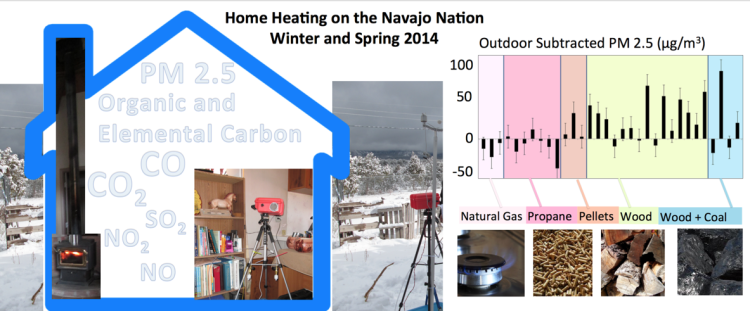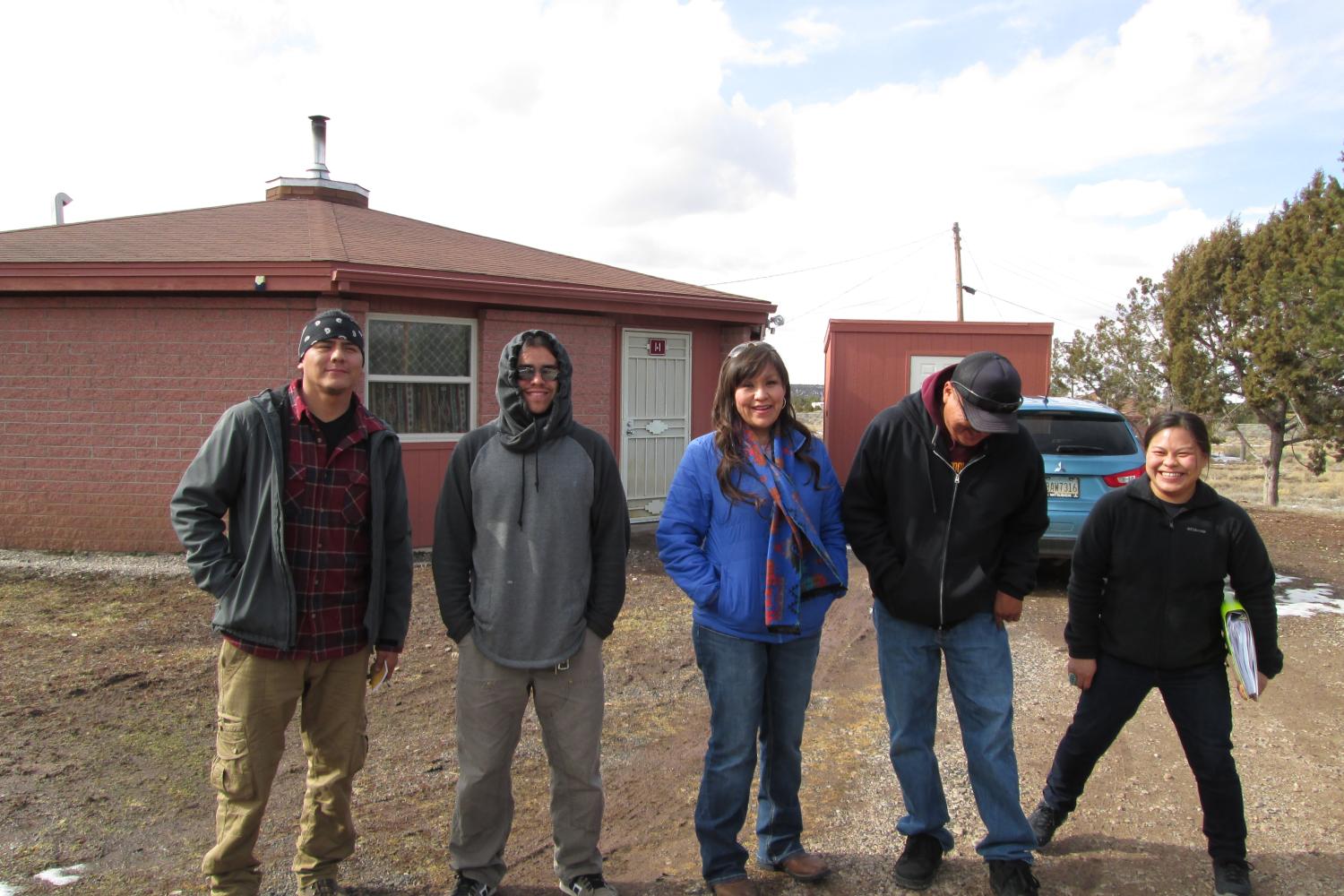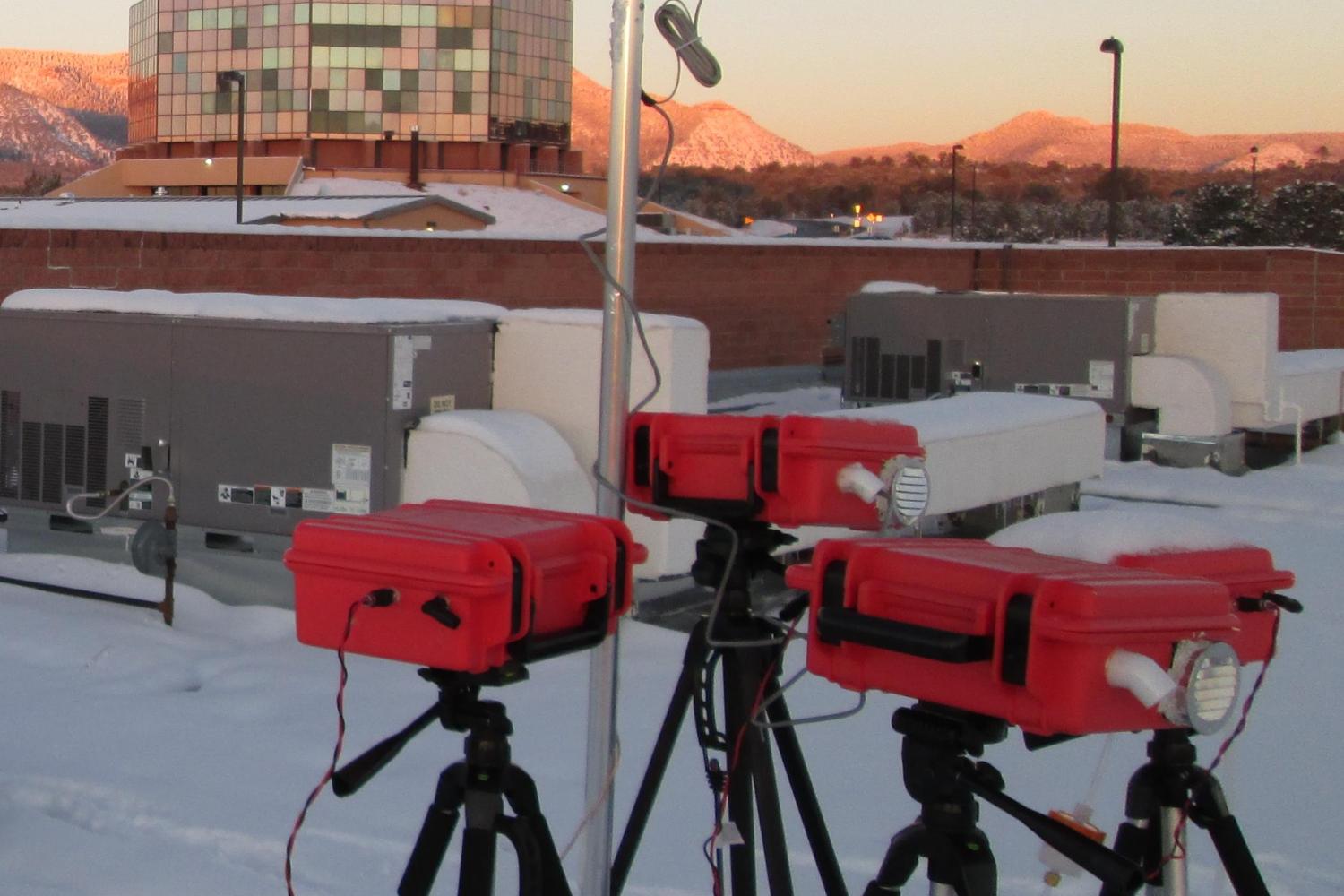Navajo Home Heating Project
Project Members
- Joanna Casey (Graduate Student, Mechanical Engineering)
- Evan Coffey (Research Assistant, Mechanical Engineering)
- Mike Hannigan (Professor, Mechanical Engineering

Detailed Summary
Project Dates: Winter 2014
During winter months on the Navajo Nation, people make choices about which fuel to use to heat homes. The most common fuels used for home heating are wood, coal, propane, natural gas, and pellets. Natural gas is not available across the majority of the Navajo Nation, and propane is relatively expensive, so many uses solid fuels like wood and coal. Several large coal mines in the region make it readily available, and affordable. Previous studies have revealed some homes on the Navajo Nation that burn coal for heat can contain relatively high concentrations of fine particulate matter.
To better understand the extent to which the type of heating fuel chosen can impact indoor air quality, gas phase pollutants and fine particulate matter were monitored inside and outside home 43 homes, along with a subset of repeated deployments. We sampled 3-4 homes at a time for periods of 3-4 days. We aimed to sample homes using different fuels for heat at the same time and to sample outside homes in order to account for the influence of weather and outdoor air quality.
U-pod Air Quality Monitors were used to continuously measure carbon dioxide, carbon monoxide and several other trace gases inside and outside each home. The carbon dioxide signal is used to estimate the air exchange rate of homes and emission rates of carbon monoxide.
Filter samples were collected during each deployment to determine the concentrations of and chemical makeup of PM2.5 in homes and outside. These measurements give insight toward the chemistry of combustion byproducts from different fuels and how they may respectively affect indoor air quality.
Other Partners
- John Ortega (NCAR)
- Margaret Mayer, Barbara Klein, Perry Charley, Mark Bauer, Tasha Nez, Charles James, DeRon White, Ryan Begay Kiki, and the Environmental Sampling Class of Spring 2014 (Diné College)
Project Funding
- NSF: Air Water Gas Sustainability Research Network (National Science Foundation)




